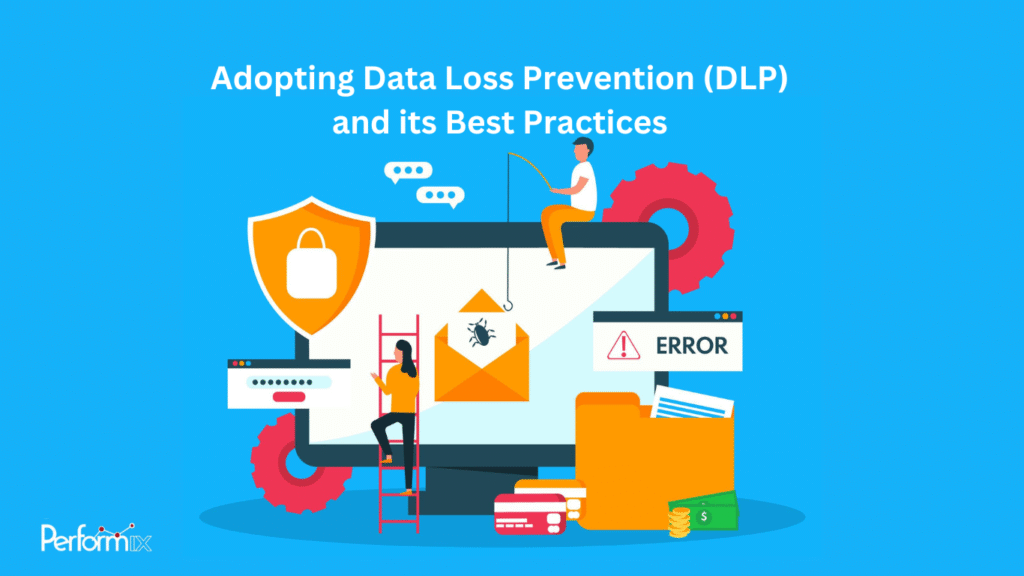Detect and Respond
In this era of big data and cloud computing, when data is constantly generated and consumed, software vulnerability has dramatically increased due to the rapid cycle of information.
In recent years, the number of cases involving data loss and theft has skyrocketed. In most cases, sensitive company records and users’ personal information were compromised.
In a large organization, data breaches and losses are inevitable due to the high volume of individuals involved in various data-related activities, such as analytics, data mining, machine learning, accounting, customer service, etc. In 2022, more than 4,100 publicized data breaches put about 22 billion records at risk. Eighty-three percent of the studied firms have experienced more than one data breach(According to an IBM report).
For this reason, data loss prevention (DLP) software is the instrument that controls data loss and data breaches.
This article will define data loss prevention and describe ways to avoid data leakage.
Do you know
Enterprises in the critical infrastructure sector had an average cost of $4.82 million for a data breach, which was $1 million more than the average cost for organizations in other industries.
Read the full report.
Explaining Data Loss Prevention
Data loss prevention, or DLP, is a collection of rules, procedures, and technologies that prevent sensitive data from leaving an organization’s internal data repositories. DLP strategies and solutions prioritize data protection against external and internal threats.
DLP technology typically features techniques for automatically detecting abnormal or undesirable behavior and initiating automated responses to eliminate threats. DLP technology frequently employs rules to detect and classify sensitive data, allowing administrators to pinpoint potential danger areas. Then, additional layers of protection might be placed in certain regions.
Frequently, organizations use data loss prevention solutions due to their inability to handle the vast volume of internal data via native means. Regulations imposed by the majority of governments and industries will also necessitate the use of a data loss protection system.

Is DLP necessary? Three major use cases of DLP policy
Data loss prevention addresses three primary objectives that are major pain points for many organizations: personal data protection/compliance, intellectual property (IP) protection, and data visibility.
Protection of Personal Information / Compliance
Organizations collect and store Personally Identifiable Information (PII), Protected Health Information (PHI), and Payment Card Information (PCI). If so, employees are subjected to compliance rules such as HIPAA (for PHI) and GDPR (for personal data of EU citizens) that require you to protect your client’s sensitive data. DLP can identify, classify, and tag sensitive data and monitor the activities and events surrounding it. Moreover, reporting capabilities provide the necessary information for compliance audits.
IP Security
Does your organization possess valuable intellectual property and trade or state secrets that, if lost or stolen, might jeopardize its financial health and reputation? DLP solutions that employ context-based classification may classify structured and unstructured intellectual property types. With policies and controls in place, you can prevent the exfiltration of this data without authorization.
Data Visibility
Does your organization desire greater visibility into data flow? A full business DLP solution enables the visibility and tracking of data on endpoints, networks, and the cloud. This will allow you to see how different users within your business interact with data.
In addition to these three primary use cases, DLP may mitigate a range of other pain points, such as insider threats, Office 365 data security, user and entity behavior analysis, and advanced threats.
How does DLP work?
DLP has two primary technological approaches:
Context analysis: only examines metadata or document attributes, such as the header, size, and format.
Content awareness: entails reading and assessing the content of a document to identify if it contains sensitive data.
Modern DLP solutions integrate these two strategies. In the initial phase, DLP analyzes the document’s context to determine if it can be classified. Content awareness is used to study the composition if the context is insufficient.
There are several common content awareness techniques:
Rule-based
Credit card or social security numbers can be located by evaluating the text of a document using specific criteria or regular expressions. This technique is particularly effective as a preliminary filter because it is simple to configure and process, but it is typically coupled with other methods.
Dictionaries
The DLP solution can recognize concepts in unstructured data that signal sensitive information by combining dictionaries, taxonomies, and linguistic rules. This requires careful modification based on the data of each company.
Exact matching of data
Creates a “fingerprint” of the data, then looks for exact matches in a database dump or live database. Creating a data dump or accessing live databases can hinder performance, which is a downside of this method.
Identical file matching
DLP generates a hash of the entire file and searches for files with the same hash. This method is quite precise, but it cannot be used for files with multiple versions.
Partial document match
It can recognize files with partial matches, such as the same form filled out by multiple individuals.
Statistical examination
It can discover information that violates a policy or contains sensitive data using machine learning methods for Bayesian analysis. Training the algorithm with more labeled data can improve the effectiveness of these strategies.

Best practices to approach data loss prevention solutions
- Classify and evaluate data
Determine which data need protection by considering its risk factors and degree of exposure. Invest in identifying and understanding data because this is the foundation for developing an organization-specific data protection policy.
- Allocate roles
Define each individual’s responsibility in the data loss prevention approach with precision.
- Begin by safeguarding the most sensitive data
Begin by identifying the type of information that poses the most danger to the organization.
- Automate as much as possible
The more DLP procedures you can automate, the wider you can spread them across your organization. Manual DLP techniques are fundamentally restricted in terms of data coverage and scope.
- Utilize anomaly detection
Rather than relying on simple statistical analysis and correlation rules, some new DLP technologies use machine learning and behavioral analytics to identify aberrant user activity. Each user and user group is modeled with a behavioral baseline, enabling reliable identification of data behaviors that may indicate malicious intent.
- Involve organizational leaders
Management is essential to the success of DLP, as policies are useless if they cannot be enforced at the organizational level.
- Educate stakeholders
Implementing a DLP policy alone is insufficient. Invest in informing stakeholders and data users about the policy, its significance, and what they must do to protect the organization’s data.
- Creating DLP documentation
Several compliance standards mandate the documentation of DLP policy. Additionally, it clarifies policy requirements and enforcement at the individual and organizational levels.
- Establish metrics
Evaluate the efficacy of the DLP using metrics such as the proportion of false positives, the number of occurrences, and the Mean Time to Response.
- Don’t save unneeded data
An organization should only use, preserve, and store vital information. If it’s not required, delete it; data that was never stored cannot be lost.
Are you ready to set up your business’s DLP policy?
Drive through these four steps to successfully set up your DLP policy.
1. Data classification must be at the core of DLP implementation.
Before adopting a DLP solution, please pay particular attention to the nature of your organization’s sensitive data and how it flows between systems. Determine how information is transmitted to recipients; this will identify transmission paths and data storage locations. Employ labels such as “employee data,” “intellectual property,” and “finance data” to classify sensitive data.
Examine and document all data departure points. The documentation of organizational procedures is not always required, and not every data flow is a routine practice.
2. Develop policies in advance
Engage IT and business personnel early in the policy creation process. This phase of the procedure should involve determining the following:
- Individualized data categories
- Implementation of measures to combat malpractice
- Future expansion of the DLP plan
- Required actions in the event of any abnormal behavior
Before implementing a DLP strategy, it is necessary to define incident management procedures and ensure they apply to each data category.
3. How to begin
Monitoring corporate data is the initial stage of DLP implementation. This lets you predict and improve how the DLP might affect the company’s culture and operations. By restricting critical information prematurely, essential company operations may be badly impacted.
DLP delivers overwhelming information, including the transmission path and location of all sensitive data. Resist the temptation to fix all of your data protection problems simultaneously.
Low-hanging fruit is an excellent starting point for a DLP installation. Establish regulations and guarantee that they are constantly evaluated and enhanced. Involve all key stakeholders and ensure they provide feedback on new data kinds, formats, and transmission methods not specified in the current DLP policy or not already secured.
4. Recognize that DLP technology has constraints
Encryption: DLP tools can only inspect encrypted data after first decrypting it. The data is rendered inaccessible if users encrypt data with keys that DLP system administrators cannot access.
Rich media: Because DLP solutions cannot analyze and classify the content of rich media, such as photos and video, they are often ineffective when working with such stuff.
Mobile: DLP solutions cannot monitor all forms of modern communication, such as messages sent from a user’s mobile device.
As you can see, data breach cannot be a considered as a minor problem, every organization be it small or large, protecting its data has become a vital activity.
Although the data-protection best practices discussed in this article can set you on the right track, your ultimate success will depend on your dedication to maintaining a high standard and your willingness to invest regularly in expanding your service. This will get you started on the right path to proving that your DLP system is good enough for the future uses that will be made.






